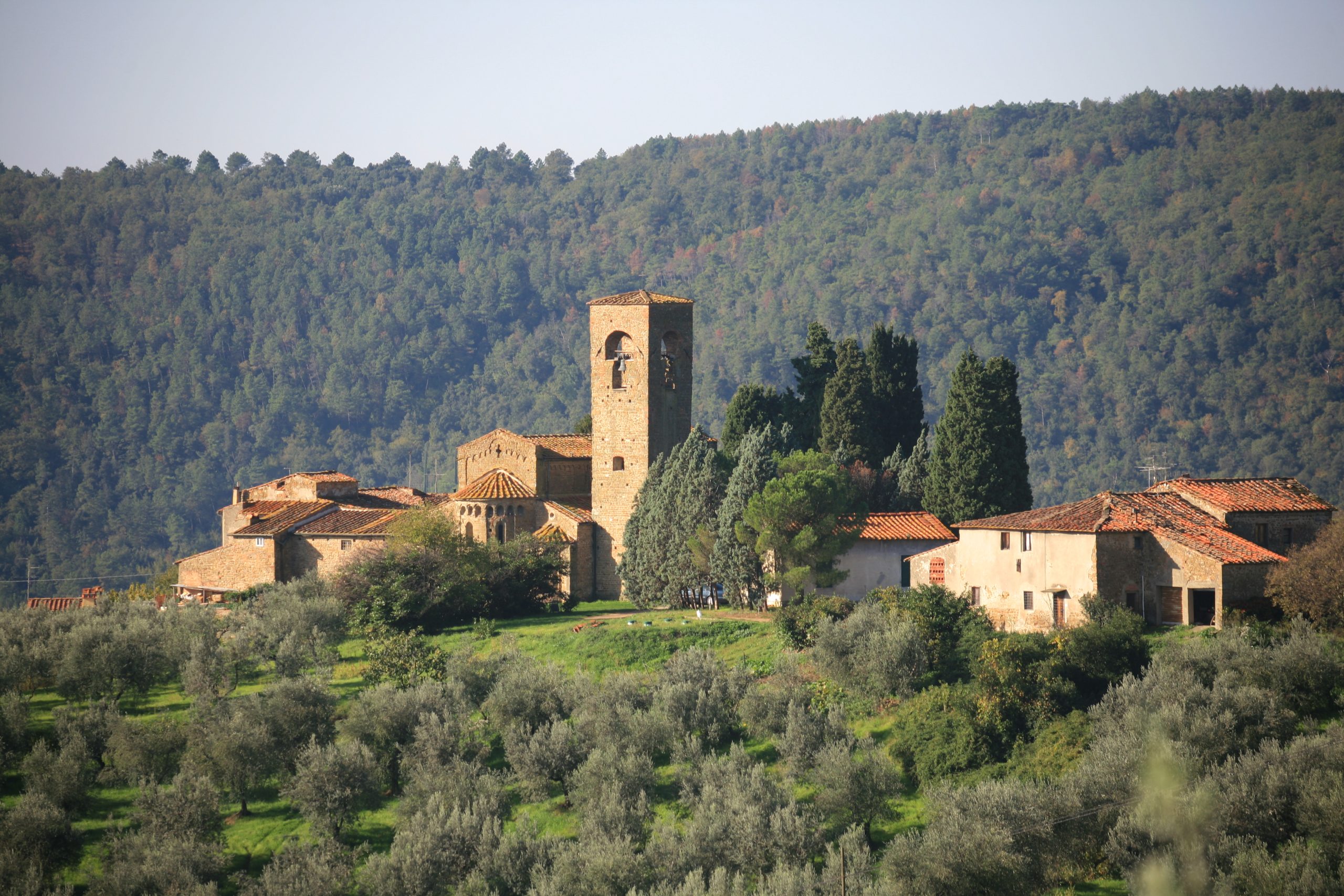The original plan of the Romanesque church of San Leonardo (230 meters above sea level) goes back probably to the second half of the tenth century. Subsequently, the church has undergone changes and renovations: in the twelfth century and in the fourteenth century, dates of the construction of the vaulted roof of the inner aisles. In the fifteenth century the façade, characterized by a blind arch with a mullioned window (a solution that is owed to Lombard workers active in Tuscany between X and XII century), was leaning against the balcony.
The rear of the building is divided into three apses (laterally characterized by blind arches that rest on pilasters, the middle, with “tube” niches) that are matched in the three interior naves separated by pillars with square corners. In the external face, made entirely of sandstone blocks arranged in regular rows, were recovered, during a restoration carried out in the second half of the ’60s, some Hellenistic Etruscan urns, now replaced by copies, that have led to the hypothesis that the existence of an Etruscan necropolis in the immediate vicinity. On the left side of the church bore the bell tower, changed between the sixteenth and seventeenth centuries.
Inside the building are preserved some works worthy of note: the altarpiece of the Madonna del Pozzo, a copy of Raphael’s painting, attributed to Franciabigio (1482-1525), where the Virgin is represented with Child and St. John, the wooden statues of San Leonardo (early fifteenth century) and St. Anthony (early sixteenth century), a group of polychrome terracotta by Della Robbia school with visitation to St. Elizabeth and behind the altar, a painting Crocifissione tra i Santi Lorenzo e Raffaele con Tobiolo, e due confratelli della Compagnia, made around 1560.
For more: : C. Cerretelli, Prato e la sua provincia, Prato 2003, p. 272 sgg.





